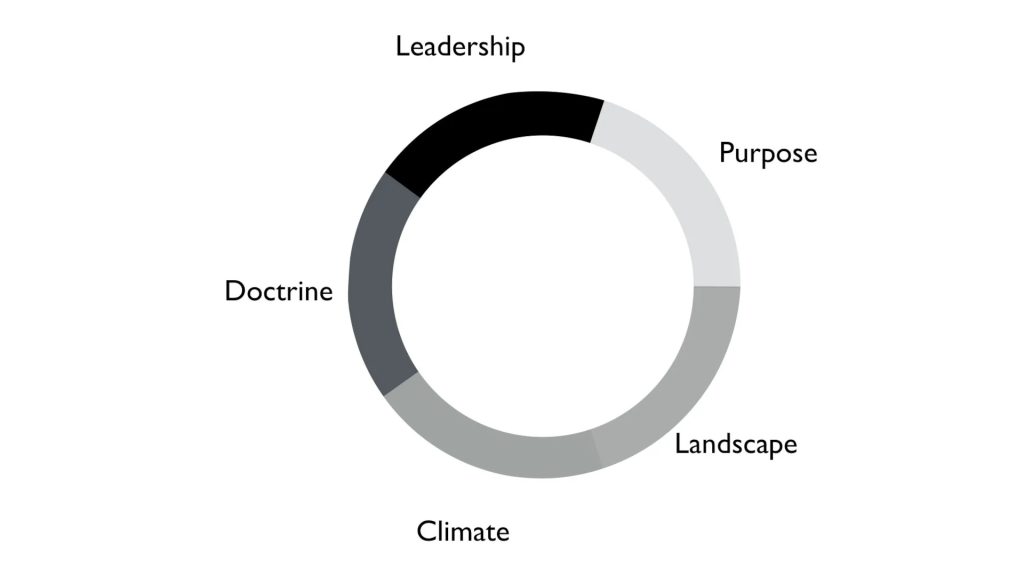Business processes are the foundation of every organization and they represent all the activities that unfold in them. The processes can be quite complex (for instance, production of computer hardware components) or simple (for instance, parking payment), but their main feature is the need for repetition of the same sequence of operations or events. The automatized process enables consistency with regard to making decisions that are aligned with the organization’s goals, which provides maximum profit with minimal costs.
Business Process Management (hereinafter referred to as BPM) helps users to define and manage processes in order for them to achieve their desired goals more quickly and easily. Using BPM enables faster and better decision-making and proactively improves the very processes that contribute to even better business results for the organization.
How do we begin with BPM?
At the beginning, it is necessary to evaluate the needs of the organization and examine its strategy and main business goals in order to capture the processes within it. Those processes whose changes will result in the greatest return of investment, so-called low-hanging fruits, should have the highest priority at the start of BPM’s implementation. These are usually processes that cause the greatest problems and whose optimization will result in the most concrete improvements. Following selection of these kinds of processes, it is necessary to find out in which segment improvements can be achieved as well as selecting the means for achieving this. Key performance indicators (KPI) can be defined for each process by which it is possible to measure the efficiency of implementation of some of these operations and events within the process. Besides this, iterative improvement of the very process is made possible in the event that there is still room left for improvement.
For instance, an organization which approves credits to its customers can encounter problems with certain business processes if the interest for a service rapidly increases. In time of very unstable currencies, if there is an unexpected increase in the number of customers’ requests to change the currency (by reprogramming) of the credit, problems may occur in regards to time required to process these requests. These problems can result in an overload in the credit department as well as customer dissatisfaction due to slow processing. With the help of a well-defined KPI, it is possible to quickly determine the ‘’bottleneck’’ of the process that is causing the delay for processing the requests (which results in slower collection of credit processing fees) and determine the measures for resolving this problem. The measures can relate to an increase in the number of employees in the credit department or they can involve simplifying the credit reprogramming process, which would result in an improvement of that department’s efficiency. Following this, with additional measurements using various KPIs it is possible with additional iterations to achieve even greater efficiency in performing certain operations within the process, if the need arises.
One product: IBM BPM
In 2011, the company IBM decided to unify various solutions in the field of BPM into a new product. From WebSphere Process Server, WebSphere Lombardi Edition and IBM Case Manager/FileNet BPM, the ‘’best’’ was taken and used in one unified product called IBM Business Process Manager. This new product has been expanded using a module called Process Designer, which enables a modeling and process debugging, a snapshot management process, adding external resources (like ‘’external’’ Java classes that define services included in the very process), connecting with external web services, implementation of a graphical interface (display) and data models that are used in the process, etc. The current version of the IBM Business Process Manager product is v7.5, which is available in three editions: Express, Standard and an Advanced Edition. The Express edition includes a full functionality of Process Designer, and it is optimized for simpler environments with one server (it does not support clustering), thus it is not intended for use in mission-critical applications. The IBM BPM Standard edition is most similar to WebSphere Lombardi Edition BPMS and it maximally simplifies the migration of Lombardi users to that edition of IBM BPM. The Advanced version comes with an Integration Designer module which enables an SOA (Service Oriented Architecture) layer for orchestrating the BPEL (Business Process Execution Language) services and processes that can be invoked by the BPMN (Business Process Model and Notation) process or that can be implemented on their own.
Designing the process
When designing a process in Process Designer it is necessary to separate tasks into several roles in the system, which are assigned as either human tasks or system tasks. Human tasks are assigned based on tasks and employees’ rights, for instance, assistants, business managers and support. System tasks include those steps of the process that the system can carry out without requiring intervention from human resources, like verifying the calculation of credit scoring, checking if the user is on a ‘’black list’’, etc. Within Process Designer, roles are defined as horizontal ‘’paths’’ called lanes. Besides that, it is also possible to define vertical segments, which represent individual phases within the process that can help to define the steps that need to be implemented in order to finish the specified process phase. These can be separated, for instance, at the initialization, data collecting, verification of data, etc. Data is transferred between process steps with the support of defined variables, which requires programming knowledge at process implementation. However, this is maximally simplified and adjusted to effective development method. Modeling the screens which constitute the graphical interface, through which users participate in the implementation, is reduced to drag and drop actions. The display screens are in the context of IBM BPM called coaches, which is inherited from the IBM Lombardi product named after the famous American football coach Vince Lombardi.
The principle of “inbox”
After the completion of implementation phase of the process model, every user uses his/her login and password to register into the Process Portal module, where he/she can view and manage his ‘’own’’ tasks. When this process reaches a state which requires certain action from a certain user (i.e. only the manager of the bank’s branch can approve a credit realization), it becomes visible in his/her ‘’inbox’, which by its design resembles to the e-mail mailbox. Using defined screens in the process model, the user can carry out all of the necessary actions and tasks in order for a process instance from one state to be completed in the next state, until the end of the process. Besides this, the Process Portal offers the option of generating different reports by which it is possible to measure the effectiveness of a process or individuals who participate in the process. Reports can be generated according to assigned parameters and key performance indicators (KPI), and in this way maximally customize and accommodate various needs.
Expansion capabilities
To further facilitate the inclusion of BPM in organizations’ business conducting and for best practice from experience to be used maximally, IBM developed three additions called Industry Packs. They include prepared models of processes, services, data and capabilities, and vocabulary and mutual components for three key industries: banking, telecommunications, and the healthcare industry. Using these completed models and components, which include summaries of best practice concepts from experience on completed projects, it is also possible to reduce the time needed to implement the same models and, in advance, avoid some of the most common problems that can occur during implementation. For example, in the healthcare industry processes are prepared for introducing new members and groups, which are compliant with standards like HL7, ASC X12 EDI (HIPAA) etc. In the telecommunications industry, processes and models for payment collection and interaction with users are prepared, based on the standards eTOM, SID and NGOSS. Within the Industry Pack, the banking industry has support for core banking, payments, risk management, and customer care, based on the standards ISO 20022, IFW, SEPA and NACHA.
IBM Blueworks Live
Blueworks Live represents IBM’s most recent SaaS (Software as a Service) solution in the area of BPM, which is based on the cloud environment and which offers users an easier introduction of BPM into its organization. Using Blueworks Live, it is possible to draw up drafts of the processes and automatize them, which eases the collaboration of all process participants as well as simplifying access to the social BPM community, which can take part in improving these very processes.
Versatile IBM BPM
IBM initiated a sort of new brand by unifying multiple individual products, whereby further strengthening the position of BPM solutions provider. Many companies around the world – like the telecommunication company Mobitel from Slovenia, the health institution Medizinische Hochschule Hannover from Germany, Atlas Air Worldwide Holdings from New York, which provides various services to airline companies, and the financial institution Wüstenrot & Württembergische AG from Germany – successfully implemented the IBM BPM solution into their business. Improvements in business were evident quickly in terms of reduced expenses, increased profits, and productivity improvements and an increase in customer service satisfaction, which makes implementation of IBM BPM worthwhile for a short timeframe. Tailored for all types and sizes of organizations, the pallet of IBM BPM products covers most organizations’ needs and is customized for simplifying integration with existing systems within the organization.
Falls Sie Fragen haben, sind wir nur einen Klick entfernt.



